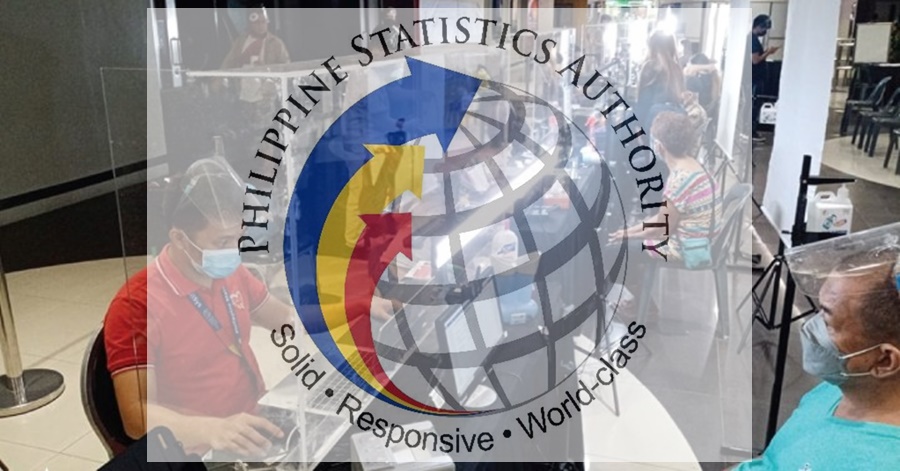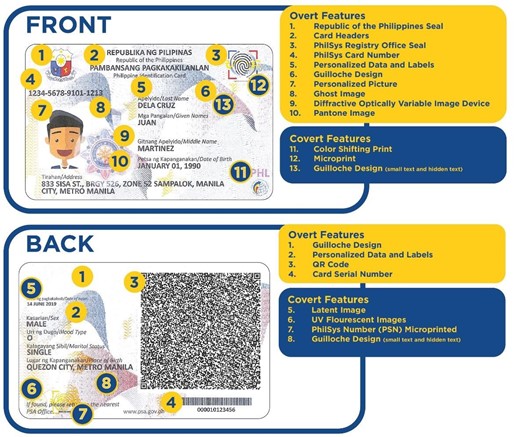The Philippine Statistics Authority (PSA) revealed the various features of the Philippine Identification Card, or PhilSys ID, on their website last week.
The government has begun providing actual identification cards to those who have completed steps 1 and 2 of the registration process. Now that the PSA has made the registration process online available, more Filipinos are encouraged to complete step 1 and reserve their slots at specified stations for step 2 (biometrics collection) so they can receive their very own PhilID.

Here’s What You’ll Find in the Philsys ID
To give you an idea of what you’ll find in the PhilSys ID according to a bulletin posted by the PSA, make sure to read until the end of this update.
The cardholder’s front-facing photograph and basic demographic information, such as full name, date of birth, and dwelling address, are printed on the front of the PhilID. To maintain the card’s security and authenticity, the PhilID also has hidden characteristics that cannot be copied, such as the guilloche design, microprinted texts, and color-shifting printing.
The cardholder’s front-facing photograph and basic demographic information, such as full name, date of birth, and dwelling address, are printed on the front of the PhilID.
The PhilID’s front card design also includes the PhilSys Card Number (PCN). The PCN is distinct from the registrant’s PhilSys Number and only serves as the serial number on the actual ID card (PSN). If a cardholder reports a missing ID card, he or she will be issued a new PCN as well as a new PhilID, but the PSN will be kept. The PSN is a random number sequence that serves as a permanent digital identify and is unique to each registrant.
The rest of the cardholder’s demographic information, such as gender, blood type, marital status, and place of birth, is included on the rear design of the PhilID. This section of the ID also includes a QR code that can be read to determine the cardholder’s PSN, a barcode for the card’s serial number, and a PSN microprint.

To create the PhilID cards, the PSA collaborated with the Bangko Sentral ng Pilipinas (BSP). The Philippine Postal Corporation (PHLPost) makes door-to-door delivery to registrants possible.
In the first two steps of PhilSys registration, all demographic information written on the PhilID is collected and confirmed. PSA monitors the customizing of these PhilID cards to ensure that all information is correct and up to date.
PHLPost had 561,042 PhilID cards ready for delivery as of June 17, 2021. PSA has previously asked government entities and commercial enterprises to recognize the PhilID as primary identity under Republic Act No. 11055, also known as the PhilSys Act.
READ NEXT: Online Registration for National ID System Now Available